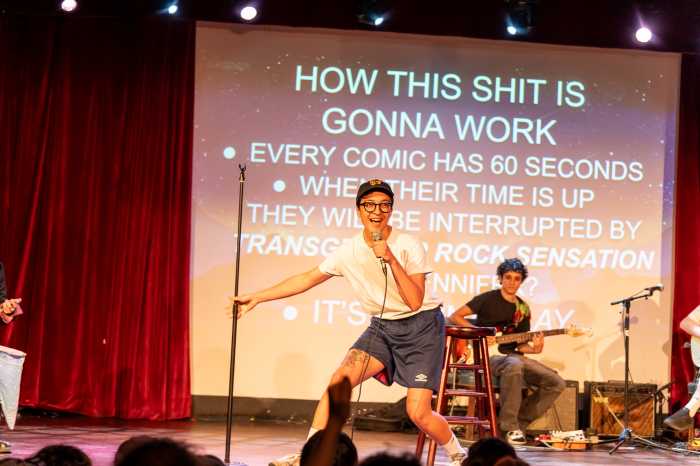Gowanus residents are split over whether to allow high-rise development in the neighborhood, according to locals who attended the unveiling of a list of rezoning demands on Monday night.
Councilman Brad Lander (D–Gowanus) and the Pratt Center for Community Development presented the draft Bridging Gowanus neighborhood planning document at the meeting, discussing for the first time the synthesized results of a year of community brainstorming sessions. Activists in attendance questioned a portion of the document that calls for allowing apartment towers within a certain height range in the predominately low-rise residential and manufacturing area.
“It’s difficult to believe a majority of the community would give up our beautiful open skies for eight-to-18-story buildings,” said Linda Mariano.
But some residents of the Gowanus Houses and Wyckoff Gardens public housing developments bristled at the blanket condemnation of building big.
“I live on the 21st story of my building, and I may cast you a shadow, but that’s my home,” said Charlene Nimmons, a Wyckoff Gardens resident. “If you say to hell with me and what I think, I might say to hell with you and what you think.”
An impromptu straw poll initiated by Mariano showed that about 60 percent of the 70-100 people present opposed inviting high-rises while 40 percent approved.

The response to the document’s other demands, including added flood control infrastructure, stronger protections for artists and industry, more affordable housing, and stricter protections for rent-regulated tenants, was largely favorable. Even formerly vocal foes of the process hailed its findings.
“I really do think there has been a lot of listening happening,” said Joseph Alexiou, who in July headed a protest disrupting a Bridging Gowanus meeting and tried to mount an alternate planning process. “I’m amazed at how much got into the report.”
The document is meant to preempt a potential rezoning, and to avoid patchwork development as property values in surrounding neighborhoods continue to rise and realtors eye the area despite the Gowanus Canal’s designation as a federal Superfund site in 2010. The city solicited neighborhood input for a possible rezoning over the course of three years starting in 2007, but pressed pause when the feds called for the pollution cleanup that is set to take at least until 2024.
Despite the largely favorable response on Monday, few suggestions outlined in the draft found unanimous support. The document calls for beefing up the neighborhood’s antiquated sewer system, which already floods the canal with filth during heavy rains, to accommodate the additional toilets that would come with new development. But that issue is already mired in controversy as residents have opposed the federal proposal to place massive sewage retention tanks beneath Thomas Greene Park and the Douglass and Degraw pool, which the city recently announced its support of.
One neighbor who expressed measured support for the proposal worried that the city and developers may see only what they want to see among the report’s many recommendations.
“If you take this to the city all they are going to see is ‘18-story buildings,’ ” said Carl Teitelbaum, a business owner and activist. “What happens if they cherry-pick?”


























